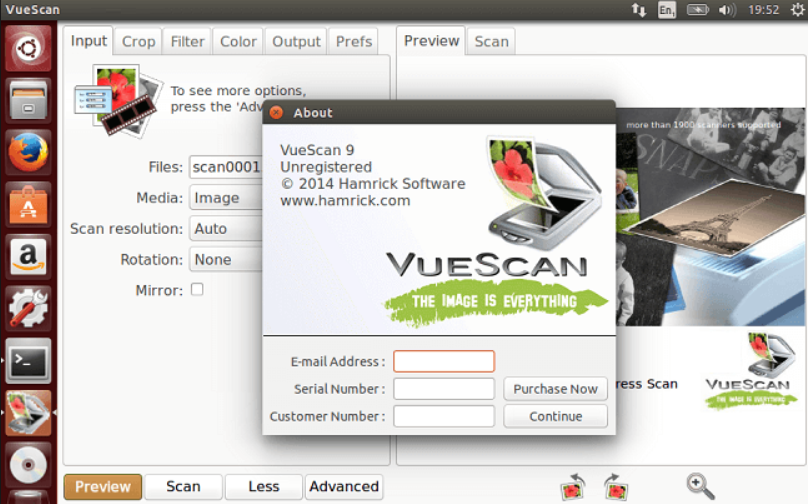

- #Scanning slides with vuescan how to#
- #Scanning slides with vuescan mac os x#
- #Scanning slides with vuescan software#
- #Scanning slides with vuescan professional#
If you use autofocus only on the prescan, it may focus on an area without much texture and reduce image sharpness in the final scan.

This should be a detailed area, not a flat tone. On the Nikon scanners, you can choose a pont on the image for the autofocus mechanism to lock on to. Auto Focus: Always (if you scanner offers this.flatbeds don't usually). You'll regret this deeply when you decide to make a larger print and have to rescan and redo ALL your post-processing, dodging and burning, retouching, etc. Don't scan lower thinking you'll make smaller prints. Scan Resolution: Whatever your scanner's highest is. The Prescan is just needed so you can set the cropping of the scan.

It doesn't need to be high resolution, so scanning for screen resolution makes the preview scan faster.
#Scanning slides with vuescan software#
The software makes the preview large enough to see on your screen. Preview resolution: Set this to 677 DPI. See my Vuescan Batch Scanning Tutorial for directions. Batch Scanning: This allows scanning more than one image at a time. In the current version, I see no difference. In earlier versions of Vuescan, I did get different results, and for some images I liked the scans using the IMAGE setting, and for some I preferred the SLIDE FILM setting. In actual practice, I can see no difference between the two settings. I have no idea how the software would know what the actual scene looked like, but that's what the Vuescan Users Guide says. Vuescan's instructions say that if you choose IMAGE, it will try to make the scan look as close as it can to the colors in the slide and if you choose SLIDE FILM, it will try to make the scan look more like the actual colors in the scene. For color slides and transparencies, there are actually two choices that will work. Media This tells Vuescan what type of film you're scanning. These are the settings that I use for scanning color slides and transparencies. The controls are divided into several tabs. Vuescan is a very powerful program with a lot of settings. Vuescan's Mac and Windows versions are identical, so these settings work on either OS.
#Scanning slides with vuescan professional#
My instructions below are for the Professional Version of Vuescan, using the advanced control set. It tends to be unstable on later versions of PowerPC OS-X and Windows, and may not work at all on the Intel Macs.

I use Vuescan, rather than Nikon's scanner software, because Nikon stopped supporting Nikon Scan years ago. The information that I give below should work perfectly for any Nikon Scanner, and should be pretty close with other film scanners. I use a Nikon LS-8000ED scanner with Vuescan software.
#Scanning slides with vuescan how to#
I also have a video tutorial showing how to use RAW Files from Vuescan. You can also watch a video version of this tutorial on YouTube. Screenshot of Vuescan with a prescan of a slide in progress.
#Scanning slides with vuescan mac os x#
It's packed with loads of useful and powerful features and currently supports more than 4300 scanners from 35 scanner manufacturers on Windows, Mac OS X and Linux. Getting started with VueScan VueScan is a powerful scanning tool that's aimed at helping you get the most out of your scanner and producing stunning results from your scanned photos. Press the View button to view the document you just scanned. They will append to the document you just scanned. Press the Scan+ button to scan additional pages.


 0 kommentar(er)
0 kommentar(er)
